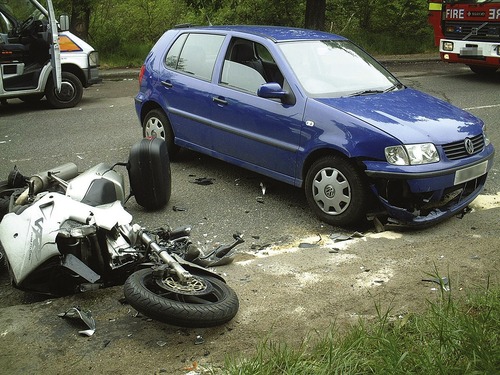CASE 6
 |
Incident
Relevant information
▪ Aircraft: Rotary-wing landing site less than 200 m (600 feet) from the incident
▪ Ground resources: One land ambulance. Police Service
▪ Retrieval options: Major trauma hospital 30 minutes by road or 10 minutes by air
▪ Other: Monday 08:00 hours. Ambient conditions: Clear 2°C (36°F)
Questions
6.1 Using the information so far available, outline your pre-hospital plan prior to arrival on the scene?
Clinical information:
Discussion
6.1 Outline the key aspects of your pre-hospital plan, prior to arrival on the scene.
Scene safety involves reconsidering all the issues and potential hazards involved in such an incident (see Case 1). Also, factor in the near-freezing temperature. The patient is reportedly ‘unconscious’ meaning that the requirement for pre-hospital anaesthesia is very likely. Patient selection for RSI has been addressed in Case 5. A few seconds with the patient (GCS 6) should provide adequate assessment to confirm this requirement. Given the mechanism, vehicle deformation, possible multi-injuries and current patient condition, early triage decisions should favour a major trauma hospital. In view of predicted transport times, the proximity of a landing site to the incident and time of day, air transport is appropriate.
6.2 In comparison to the in-hospital environment, pre-hospital airway management is more complex. Challenges in a pre-hospital and retrieval setting include:
• non-fasted, awake or combative patients.
• airway trauma.
• unpredicted difficult anatomy.
• blood, vomit and debris in the upper airway.
• difficult access to the patient.
• extreme environmental challenges (ambient light, noise and temperature).
• logistic challenges associated with the required patient transport.
• extreme acuity of injury or illness.
• limited equipment and monitoring.
• lack of skilled assistance and back-up.
The PHR team should, therefore, work on the principle that every pre-hospital airway will be difficult. When performing pre-hospital RSI, all efforts should, therefore, be made to optimise the first attempt’s success. Key considerations to this approach are outlined below.
Location
The patient should be moved to a safe area of the scene with 360 degree access obtained wherever possible. A few minutes spent creating space before RSI will be rewarded if and when difficulties are encountered. In addition, the patient should be positioned on a stretcher wherever possible. Likewise, environmental factors need to be taken into account. Shelter from sunlight, heat, cold, wind or rain can be achieved by moving the patient into the transport vehicle. However (dependent upon vehicle configuration and size) this may compromise the 360 degree access. Other emergency services can help by holding up tarpaulins or blankets to shield patients from the elements as well as from onlookers. Be aware that sun glare may affect your laryngeal view as your eyes pass from the bright sunlight to a larynx lit only by the relatively poor artificial light of the laryngoscope.
Patient preparation
Airway assessment for predictors of airway difficulty can occur during this phase. The 4 Ds, while not representing an exhaustive list, will assist in this regard:
< div class='tao-gold-member'>
Only gold members can continue reading. Log In or Register to continue
Stay updated, free articles. Join our Telegram channel

Full access? Get Clinical Tree








